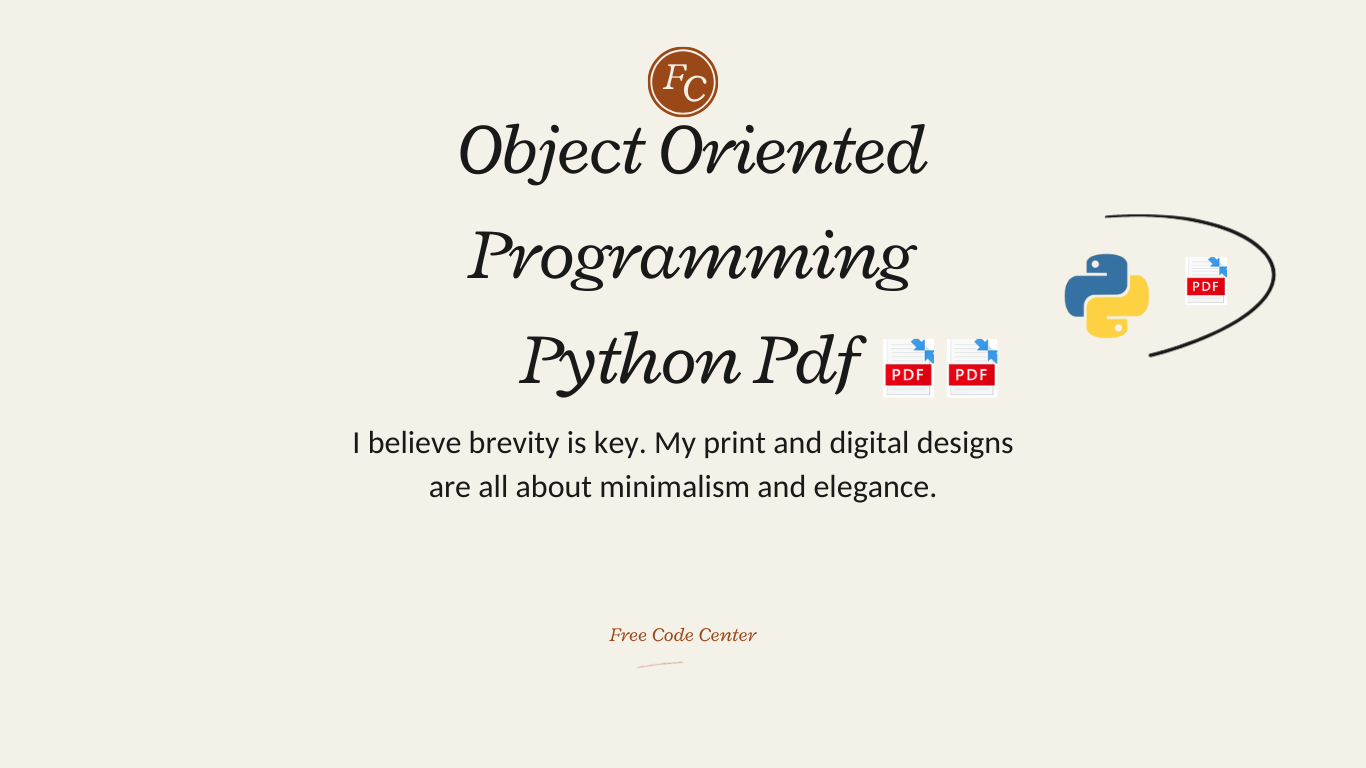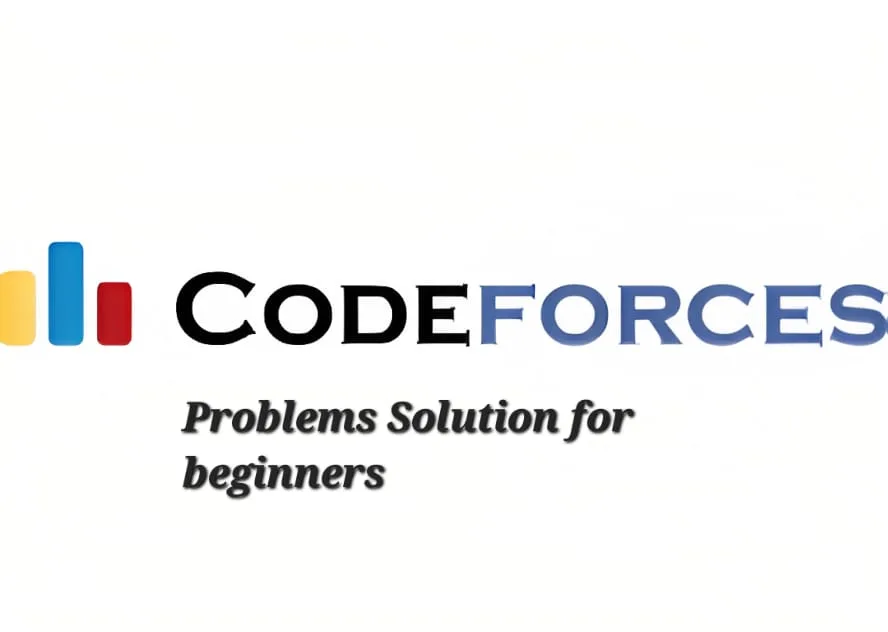Master Object Oriented Programming Python Pdf Resources
Introduction
Python’s design philosophy and broad application across domains have contributed to its popularity among many programming languages. A unique feature of Python is its support for object-oriented programming (OOP), a software design process based on the concept of data encapsulation as witnessed in objects rather than in methods and logic. If you want to learn OOP with Python, you will find the PDFs very useful because they are readily available and contain all the necessary information. In this article, we will look at OOP in Python using downloadable PDF textbooks. This materials will be helpful for everyone who is a novice and who wants to polish their knowledge of the OOP principles.
What is Object-Oriented Programming?
Object-oriented programming is a programming model that helps a developer organize code by using classes and objects. An object is a specific instance of a class which has attributes and actions (methods) associated with it that are defined in that class.
Key Principles of OOP:
- Encapsulation: Bundling of data (attributes) and methods (behaviors) within one unit (class) and maintaining a controlled accessibility of these class members.
- Inheritance: Deriving a class from another class to enable the use and implementation of its features and capabilities.
- Polymorphism: The practice of allowing several different types of objects to be handled using the same method.
- Abstraction: The ability to deal with the essence of complexity while ignoring the unnecessary details by defining objects that are relevant to the issue at hand.
In this way, it is possible to create and control big programs in a systematic and orderly manner thanks to Python.
Why Use PDFs for Learning OOP in Python?
PDFs are widely used for eLearning materials as they are easy to carry and access in an offline mode. You are allowed to download, circulate, or print these materials and read them even as you travel. Also, there are a variety of all-inclusive PDF files that cover the topic of Python OOP that are freely distributed to the public
Benefits of Python OOP PDFs:
- Learning in Stages: This is a common feature in most text-based training courses in form of a series of stages with each stage enhancing the previous.
- Accessing Materials While Offline: After saving them, they may be used irrespective of location and time.
- Visual Supplements: Most of the PDFs contain pictures and illustrations, which aid in clarifying difficult to understand concepts.
Frequently Asked Questions About OOP in Python PDFs
1. What Should I Look for in a Python OOP PDF?
Depends on the purpose of purchase: clarity, detail, and practical illustrations. Considered the OOP sections, Encapsulation, Inheritance, Polymorphism and Abstraction, and their applications in Python with Sample code to try out.
2. Are Free Python OOP PDFs Reliable?
Sure, countless no-cost PDF’s come from reputable companies such as MIT or Stanford. Still, this is a risk in making such blanket assumptions without first verifying the authority of the person or organization and looking for any ratings or feedback from users.
3. Can I Learn Python OOP Only Through PDFs?
PDF’s are a good source to rely on; however, the period of practice will increase significantly if one engages in practical coding and watching relevant tutorials. In-depth understanding of such topics comes from working on OOP principles in practice.
Object Oriented Programming Python Pdf
1. Classes and Objects
A class in Python acts as a blueprint for creating objects (specific instances of the class). For example:
class Car:
def __init__(self, brand, model):
self.brand = brand
self.model = modelIn this example, Car is a class, and brand and model are properties that every car object will have. The __init__ method initializes the object’s properties when an object is created.
2. Methods
Methods in Python are functions that belong to an object. They define the behavior of the objects created from a class. Here’s an example:
def start_engine(self):
print(f"{self.brand} {self.model}'s engine started.")The method start_engine() can be called on any car object, and it will perform the same task — starting the engine.
3. Inheritance
Inheritance allows one class to inherit properties and methods from another. This helps to avoid redundancy and makes the code more manageable. For instance:
class ElectricCar(Car):
def __init__(self, brand, model, battery_capacity):
super().__init__(brand, model)
self.battery_capacity = battery_capacityHere, ElectricCar inherits all the properties of the Car class but adds its own unique property, battery_capacity.
4. Polymorphism
Polymorphism allows methods to do different things based on the object calling them. For example:
class DieselCar(Car):
def fuel_type(self):
return "Diesel"
class ElectricCar(Car):
def fuel_type(self):
return "Electric"Both the DieselCar and ElectricCar classes implement a fuel_type method, but they return different outputs depending on the type of car.
How PDFs Simplify Object Oriented Programming Python Pdf for Beginners
Graphic Presentation
The use of visual examples such as flowcharts and diagrams is common in many PDFs to elucidate complicated concepts such as OOP. This greatly helps to comprehend for learners who do not find the text very elaborate and prefer visuals.
Group Work
The finest PDFs usually have solution/applied problems at the end of each section to prompt the users to begin applying what they have learned straight away.
Illustrative Program Code Extracts
An ideal PDF would contain offering pieces of codes that one is free to use and play around with. It also illustrates the practical usage of OOP concepts in the relevant source code in Python.
Python object-oriented programming
- Real Python’s OOP Guide
- Covers all OOP principles with a focus on practical implementation.
- MIT’s Free Python OOP
- It offers a more academic perspective, ideal for those looking for an in-depth understanding.
- Python.org Documentation
- The official Python documentation is comprehensive and includes plenty of examples and explanations.
- GeeksforGeeks OOP in Python
- A more user-friendly option, filled with examples and exercises.
- Learn Python the Hard Way (Zed Shaw)
- Focuses on making the reader practice OOP by writing code.
Conclusion
Gaining deep knowledge on object-oriented programming concepts using Python brings one closer to being an excellent developer. For example, learning OOP concepts through pdf materials can be comfortable since they provide organized information, and several real life cases, and can be accessed with ease without internet connections. Whether you are a fresher or a seasoned programmer, you will always benefit from engaging in the interesting world of OOP, made possible through properly arranged PDF resource materials that will help hone your skills and systematize the way you program.
So start putting these materials into practice and pretty soon without even noticing you will get used to writing clean and well-structured Python code.





